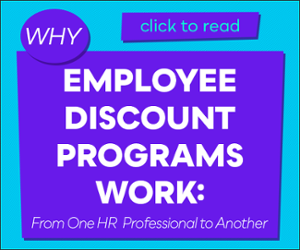Rent: up 6%.
Car insurance: +20%.
Bread: +3%.
Baby formula: +7%.
2023 data is rolling in and it’s not just everyday costs that are up this year. Employees’ anxieties are too. Mercer just released their annual Inside Employees’ Minds report that summarizes employees’ top concerns. And for U.S. workers, financial security is at the top of the list for 2024.
It’s nothing new for companies to provide financial benefits for their workforce. Financial wellness for employees has been a big deal for a long time. Especially when it comes to retirement benefits.
But what about today?
Yes, financial wellness is important. But “wallet wellness” - having enough to pay for housing, food, transportation and the other stuff you need day-to-day - is a whole separate challenge. Respondents in the Mercer study said the number one thing that keeps them up at night is worrying about paying for their monthly expenses.
Forget about saving for retirement. Rolling into 2024, many employees are saving less, dipping into their retirement accounts and living paycheck to paycheck. Bank of America published research in 2023 indicating that fewer employees are prioritizing long-term retirement savings and a growing number are focusing on short-term financial needs.
The truth is, many employees aren’t even thinking about paying for retirement. They’re too busy trying to figure out how to pay for right now.
Cost of Living Shifts Financial Focus for U.S. Workers
Costs of living have increased so sharply in the past few years that even mid- to upper-division salaries often aren’t enough to keep up with people’s monthly expenses anymore.
.jpg?width=450&height=349&name=House%20Prices%20Chart%20(1).jpg) With the cost to own a home higher than ever, many workers start the month by handing over a third of their paycheck (or more) to their mortgage company. And that’s just the beginning. On top of mortgage payments, homeowners in one survey reported spending $17,500 a year on other expenses like maintenance, repairs, insurance, taxes, and utilities.
With the cost to own a home higher than ever, many workers start the month by handing over a third of their paycheck (or more) to their mortgage company. And that’s just the beginning. On top of mortgage payments, homeowners in one survey reported spending $17,500 a year on other expenses like maintenance, repairs, insurance, taxes, and utilities.
And that’s for the people who own a home. Sky-high house prices and mortgage rates have priced out many would-be buyers. Instead, they rent a place to live and miss out on amassing equity in a home. These aspiring homeowners often find themselves falling further behind as inflation continues its climb.
Unfortunately, renters don’t have it much better month-to-month. The typical American tenant is officially “rent-burdened” for the first time ever. On average, people are paying more than 30% of their monthly income in rent. The pressure is even greater when you consider low- to moderate-income families. Many of these households pay upwards of 40% of their income in rent or even higher in some of the larger metro areas.
Then there are groceries. Prior to 2020, grocery prices consistently ticked up around 2% each year. Coming out of the COVID-19 pandemic, however, many stores dealt with disruptions to the food supply chain that led to an 11% increase in grocery prices in 2022 alone. They rose even further in 2023 by another 6%. Consumers really felt the pinch when the price for eggs more than quadrupled from just under $1.00 a dozen in 2021 to $5.46 per dozen in 2023.
After housing and food, there are car payments, gas, utilities, subscription fees, medical and dental costs, student loan payments and travel, most of which are rising right along with groceries. It’s no wonder so many struggle to keep up.
Employees Want Financial Security from Employers
Even though organizations aren’t to blame for their employees’ financial woes, they certainly aren’t off the hook either. One thing that hasn’t changed is that U.S. workers continue to expect financial stability from their employers. A 2023 Bank of America report found that 76% of employees and 96% of employers agreed that employers are responsible for employee financial wellness.
Organizations and their HR leaders have a lot to lose if they can’t keep up with workers’ needs. In fact, some estimates suggest that U.S. businesses forfeit over $1 trillion every year to voluntary turnover. Experts say the cost to replace a good employee can range anywhere from 33% to 400% of their annual salary. While keeping employees happy and engaged can sound expensive, dealing with the aftermath of employee turnover costs even more. And millennial workers have shown they’re not afraid to walk away from a job for one that will pay them more or give them better benefits.
Regrettably, employers can’t always rely on wage increases to solve their employees’ financial anguish. As a result, employers are forced to get creative in order to retain their top performers. It’s clear that future-focused financial benefits alone aren’t cutting it anymore. A cushy retirement account only carries so much value when someone is struggling to make ends meet. Instead, people want benefits that give them more spending power now, not just in 30 years.
5 Benefits that Promote Wallet Wellness with Employees
The good news for employers is that financial benefits that keep more of employees’ hard-earned dollars in their wallet are actually fairly simple to implement. And often, they’re not as expensive as they’d think. Here are 5 ways to get started:
1. Employee Discount ProgramsOur favorite solution for stretching employee paychecks is an employee discount program. With the potential to save workers hundreds to thousands each year, no other employee benefit has such a huge impact while costing the company so little. For example, most organizations can provide Access Perks employee discounts to their entire workforce for the same amount it would cost to buy them a candy bar each month.
 The best employee discount programs grant users access to savings at places right in their neighborhood, where they shop on a regular basis. That way, they’re able to shave money off their purchases at restaurants, retailers, auto shops, hair salons and the like. The savings stack up quickly and it doesn’t take long to feel a huge difference in their wallet.
The best employee discount programs grant users access to savings at places right in their neighborhood, where they shop on a regular basis. That way, they’re able to shave money off their purchases at restaurants, retailers, auto shops, hair salons and the like. The savings stack up quickly and it doesn’t take long to feel a huge difference in their wallet.
On top of that, some employee discount programs offer incredible travel deals. Access Perks even has its own travel engine. Users can book flights, hotels, theme park tickets, rental cars and just about everything they need to make their dream vacations a reality at a price they can afford.
2. Health Savings AccountsHealth Savings Accounts (HSAs) are growing rapidly in popularity as a benefit employers use to help their employees pay for medical expenses. As insurance prices have shot up, many companies have opted for high-deductible plans which shift a greater percentage of those costs to the employee. HSAs are often paired with these plans to help employees set aside funds to pay the higher medical bills.
HSAs allow participants to tuck away money with a triple tax advantage. Contributions are made pre-tax, the money grows in the accounts tax-free and there is no tax on qualified withdrawals.
Nearly half (46.7%) of plan providers now opt to automatically enroll eligible employees in their HSA, according to Plan Sponsor Council of America’s 5th Annual HSA survey. It’s one way that employers are taking initiative to support their workers’ financial security.
“The big jump in HSA auto-enrollments reflects the mainstream adoption of these accounts, and we can expect this trend to continue as more employers look to better support their employees’ long-term financial future,” said Ann Brisk, senior managing director of innovation and strategy at HSA Bank.
With healthcare costs growing at significantly higher rates (4.5% annually) than typical inflation (2.9%), finding ways to offer relief in this area can be a game-changer for employers. Proponents also argue that it encourages employees to keep up on regular healthcare visits so needs don’t become as dire - or in other words - expensive.
3. Tuition Assistance and/or Student Loan Repayment
In one recent survey of 500 workers ages 22 to 33, over half of respondents said they worry about student loan debt most or all of the time. And 86% of employees said they would commit to a company for five years if the employer helped pay back their student loans. That’s saying a lot for today’s workers considering the average tenure for Millennial workers is just over two and a half years.
Although there are several different repayment plans for student loans that cause monthly payment amounts to vary, one way or another, they do need to be paid back. And when so much of their paycheck has to go toward that payment, it's even more difficult to meet all their other costly obligations.
“Young workers feel highly stressed as a result of the burden of student debt, and that debt clearly impacts their health and productivity in the workplace,” said Kevin Fudge, director of consumer advocacy at American Student Assistance (ASA), a nonprofit organization that helps eliminate financial barriers to education. “Employers should realize that in order to retain the brightest young talent and demonstrate their commitment to employee well-being, they need to provide concrete and straightforward solutions to help alleviate the burden of student loan debt.”
Recent legislation has incentivized employers a little. Now, thanks to the 2020 CARES Act and the Consolidated Appropriations Act of 2021, employers can contribute up to $5,250 per employee per year toward student loans as a means of education assistance, tax-free. This means that money goes directly to the employee rather than shaving some off for taxes first like would happen with a wage increase.
Helping workers pay for their education is a great way for organizations to invest in their employees and take a significant burden off their plate.
4. Travel StipendsIt’s increasingly apparent that Millennials and Gen Zers love to travel. So much, in fact, that 79% of them consider leisure travel an important budget priority. And 84% say they would rather take a dream vacation than purchase a new luxury item. But it’s not all about leisure. Between holidays, family emergencies, and vacations, travel is one of the most expensive purchases consumers make each year. Yet, with other costs of living skyrocketing, it can be challenging to make those trips happen.
As such, it’s not a huge surprise that travel benefits are so popular in today’s workforce. One way for organizations to make a real difference for their employees is with travel discounts like those in an employee discount program. Even further, some companies award stipends that their workers can put directly toward their travel expenses. For example, here at Access Perks, our employees can each receive $500 toward a travel booking of their choice every year. On top of that, employees have the option of being reimbursed for a National Park Annual Pass. It has been a relatively simple way to help employees get out and experience new places without breaking the bank.
5. Subsidize Monthly SubscriptionsAnother strategy that companies use to alleviate financial strain on their workers is to assume some of the cost of certain recurring monthly bills. This might look a little different from company to company and can vary widely based on factors like the number of employees, location, and whether employees work onsite or remotely.
In unique circumstances, organizations can put employees on a company cell phone plan and cover that bill in its entirety. But more often, employers opt to arrange for a discount that greatly reduces the cost each month.
A similar option would be to subsidize employees’ gym memberships. This could be done by setting up an on-site fitness center where workers can exercise for free, reimbursing membership fees at a local gym, or facilitating lower rates on memberships through an employee discount program.
There is really no shortage of subscription costs that employers could help alleviate for their employees. Options include video or music streaming services, shopping memberships (like Costco), meal plans, delivery apps, reading, and education. It’s why discounts within subscription services have become such a staple in our own employee discount program. The savings for everyday workers across the spectrum are simply too significant to ignore.
The consistency of the price tag not being quite as heavy, or not having to worry about that monthly bill altogether, really adds up over time and goes a long way with employees.
Financial Fitness Contributes to Total Wellness
Employee wellness initiatives are taking off as companies recognize how much good comes from supporting their people in all areas of their lives: physical health, emotional well-being, learning & development, and everything in between. Financial fitness plays a big part in all of it - perhaps the largest - because it’s all interconnected.
HR has the important job of making adjustments to their organizations’ benefits offerings as employee priorities, needs, and expectations ebb and flow. Rolling out the right financial wellness programs that cultivate wallet wellness is critical so employees feel confident in their finances now and for the future.
For more insights into employee wellness, check out our articles:







